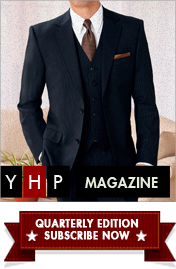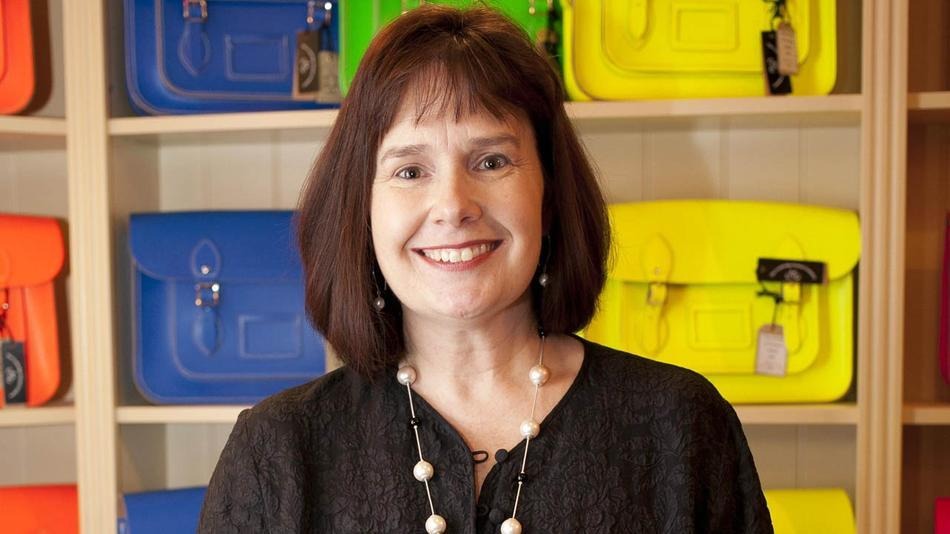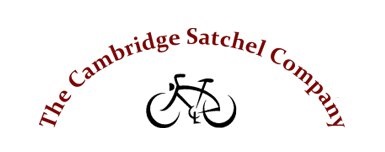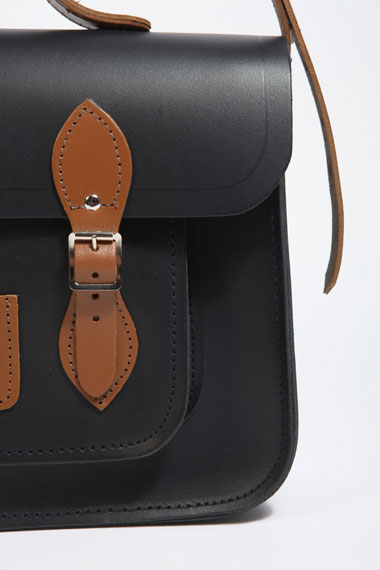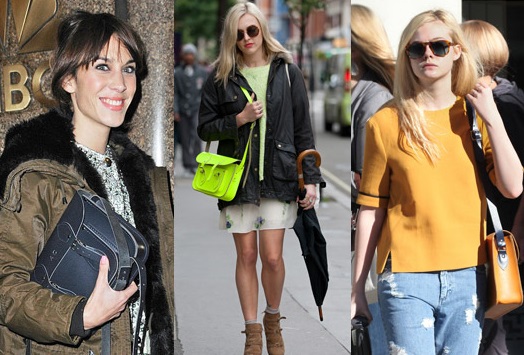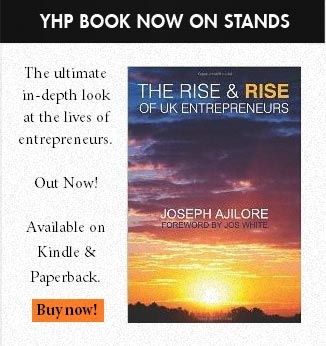I recently had the chance to interview someone who I have long admired. Julie Deane, mumpreneur if you're one of those who need to categories, started her company in 2008 just as the recession hit!
The story of Julie Deane shot to fame when she appeared in one of the Google ads (you can find it further down the page) but I wanted to get the full story, the ups and the downs! It's long but it's good.
So without further ado, here's my interview:
So Julie, first of all, if you could give me a bit of background to yourself before you started The Cambridge Satchel Company:
I went to Cambridge University to study natural sciences, so I got a BA and an MA on Plant Transport Mechanisms, its pretty niche so I already have quite a nerdy background. I really like facts and figures, like analysis, analytics, graphs- you know, all the numbers stuff is what makes sense to me.
Then I joined Deloitte and did the whole accounting thing, I went to the US with them so I had my international experience. I worked for them over here and also in Chicago. And then came back to set up the Development office.
So, I came back to Cambridge and that’s why I am based in Cambridge because we came from the States for me to take up that position. And I was there for five years until I was expecting my first child.
Emily was born in 1999 and that’s when I decided to be a stay at home mum and really enjoy the children while they are little - and I did that for eight years ‐ but I really like being busy so during that time I was still involved in many different things but I didn’t have a full-time job.
So give me quick run down of what The Cambridge Satchel Company is all about?
The Cambridge Satchel Company was born in 2008, I needed to make money to send my children to a different school. I had £600 and the length of the school holidays, because my daughter was being bullied; she was really unhappy. I promised her that she will never go back to that school, so that meant that I just had the school holidays and in that time I had to set up a company really quickly.
So I made a list of ten things that I thought I could do and then ranked them for cash flow and if they would be able to produce the money that I needed in the timeframe that I needed it, how much investment they needed because, I only had £600 for the project and that was it. I am really strict about never going into debt, never borrowing so 600 was it.
I ended up with all of the rankings and what would scale up and what would carry on even if I was knocked over by a bus, all these kind of things, really narrowed it down and I was left with the Cambridge Satchel Company.
It’s very straightforward. At that time, regardless – and this is what people come across if their business takes off ‐ there are lots of imitators that would say “Oh we were making Satchels before them”, and they weren't In 2008 I had looked really, really hard for satchels for my children and they weren't being made, they weren't available.
I thought maybe there are other people who want their children to have - and I did think its gonna be for school children ‐ the same sort of thing.
So I started the Cambridge Satchel Company and I tried to keep my overheads really low, I did absolutely everything myself, so I had no experience in building a website but there are so many things, so many tutorials.
Microsoft had a brilliant thing on how to create a website and its free and I did it over two nights and then created my website the next day.
I’m impressed.
I managed to get prototypes of the bags made and then just took my children out and took photos around Cambridge and uploaded those onto the website, and used Google ads.
I did absolutely everything from printing out little flyers to printing out index cards that I put on bulletin boards, absolutely every school, ever doctors surgery, every community center, dentists, doctors, they all had these things that I was churning out from my kitchen. And emailing every kind of fashion editor, lifestyle editor, newspaper editor, business editor, anyone that I thought might have a tiny, tiny grain of interest in reading about what I was trying to do.
And we got noticed. Less than five years on and we turn over about a million pounds a month!
Wow! What was it like in the early days? What was the take up like?
It was quite slow in the first year I’d say, but then it started gaining some momentum. If you’re lucky you’ll get picked up by a really good Christmas gift guide, or somebody with a big audience for their website, or some big blogger will decide to champion you.
Its just one of those things if you believe in it, you cant say “Oh I thought I had more interest. Maybe I’ll swap and try something else”. I think you really gotta keep your head down and keep pushing, pushing, pushing all the time. Its not easy but you've just gotta stay with your ideas, the ideas you really believe in.
Sure. So you've got the original style satchel and then you've got the neon colored ones as well right?
Fluorescent, yeah.
Fluorescent. Did you create the fluorescent ones from the beginning as well?
No, they were after conversation with Elle magazine. You must have seen the Google adverts, just like on the adverts, Donna was looking for some really, really bright satchels, and thought I can do bright, I can do really, really bright, so I sent them some of the fluorescent satchels and those took off in a huge way at New York fashion week.
So they became something of a phenomenon and now we’re doing the see-through ones; its just about trying to keep it moving, creating new things, doing new high-level collaborations.
Its very, very annoying looking at websites that spring up every time we bring out a turquoise one, for example, and you can count, it will be less than a week until the same turquoise appears on somebody else’s website. Really, you can’t even pick your own colors now?
Wow… Do you get a lot of copies?
Oh yes, all the time, all the time! There is copying on lots of different levels, there is people who will try to call themselves first and they will make up things like ‐ “The Original Leather Satchel Company” or “The Leather Satchel Company”, or we’re "The Cambridge Satchel Company” so they will call themselves “The Oxford Satchel Company” (laughs)
You see all of those coming up, its only if people and customers don’t care who they’re buying from ‐ if you go to company’s house and you see “Oh are they based in Oxford? No” or “It says they were going for so long. But they were founded in 2010. Hold on.” You just scratch the surface and you can see; now the Internet is a huge opportunity because you can give the impression of being a far bigger business and far more established business than you actually are.
You know, before the Internet what would people go by? They would go by what your shop was like or how many shops you had. But on the Internet you can get the impression of being Mulberry when actually you’re being run from a shed or kitchen. It’s a fantastic opportunity to make the most of- and I remember in the early days I remember thinking I have to get the domain name sorted because then I could have “sales @, customer service @, dispatch @” and you can create those with a one person company but it does give the impression that you are much, much larger. And it’s important to use that to your advantage from the early days, to make it look professional, but not use it to mislead people. I think it’s quite a narrow line.
Absolutely, it can be used both ways, right.
Absolutely it can be used both ways. And then there’s the imitations that will just copy our website and put it on as different domain names, so there will be Cambridge Satchel with two I's for example. In September we had over 330 fake Cambridge Satchel websites.
That’s something to bear in mind when you are setting up your company – choose a name that you are happy with and then buy up the obvious domain names first and add the rest of the names as you and when you can afford them.
Don’t waste up all your budget on buying the domain names at the start as you have no brand to protect, but as you grow its something to keep an eye on I think.
It’s the seam of protection that we have grown to realise is very important.
How else do you go about trying to protect yourself against copies?
Well, we've got a lot of IP protection and so our name, many of our designs etc... are protected now that we have IP protection on them, the logo is protected, the satchel, the little bicycle is all protected; and we do enforce, we go pretty heavily because lot of these places think “Oh who can we rip off?” and then you need to show that you are not buying IP protection and then not using it.
And then from the other side, probably the worst ripping off was the whole satchel thing; satchels were one of our manufacturers that we taught to make the bags, took into our factories, gave the patterns, gave the templates, buy them knifes, bought them all their leather, and then found out that they were making bags and hiding them across the road, you know, with satchels labels on. That’s on the other side of it, and this is something I always say when I talk to young designers about how to get their stuff made and to market: You have to use NDA’s and manufacturing agreements so that your manufacturer knows that they cant just take your idea and rip you off.
Sure. So, satchels are still going right?
They are still going. I look at it and think, well, I really learned a lot from it. If it wasn't for them I would not have my own factory now, because I was so determined that that would never ever happen again that I thought that, the only way that I could completely safeguard against this happening again is to stop looking for more UK manufacturers, or any manufacturers, and to set up our factory alone. And so that factory has grown and grown and we make over 500 bags a day there now and so we can set up apprenticeship schemes, and we’re moving into new bigger factories, creating more jobs .We can control the quality much better coming from there.
These are all kinds of advantages that we've had from having our own factory but it was learning the hard way I think and it is quite difficult seeing somebody out there that came into being from such an unethical start “Do customers know? And if they do know do they even care?” You know, you just gotta keep on with your own brand trying to be better, more innovative, better quality and that’s the best way of moving forward.
And what was the biggest challenge then, when you first started?
First started? Hmm… I think, getting noticed. I think that was the biggest challenge.
But you just have to try and find every single way of getting listings, not just online, offline as well in traditional media and newspapers, absolutely every single means of getting noticed that you can think of.
Did you emphasis a story that you could sell to them so they could write about you?
No because people aren't going to buy something because of the story behind it, you have to have a really good product. So it’s just trying to say “This is a really good product, focus on the product.” It’s interesting how you get started and what/s the motivation behind it, but once you get down to it people are going to buy the product and not just buy because they like the story behind it if they don’t really like the product.
Right okay. And so when you were coming up with your ideas, you had a list of ten, what other ideas did you have?
No, no, no. (laughs) No way that list is… Maybe one day I’ll have my own book, but before then that list is not going out!
Okay. (laughs) Did you have an eye for fashion before though?
Yeah, the first place I ever applied for a job for was the Chanel in London, asking if they had any accounts based, numbers based position at all in what I consider the best fashion house in the world, and that was always an area I thought was fascinating.
Okay, and lastly, what advice would you give to anyone else who is starting a business?
I think that you must create a deadline for yourself, otherwise you can waste time in doing research and market research and there will never be the right time to jump into because the Internet makes it so easy now to get started and reach so many different people.
There is no reason not to think “By this time next week I will have these five things done” and stick to it. And so it’s too easy to keep putting things off. I didn't have that option because I had to make school fees so I had a deadline; but a lot of people I speak to they have excellent ideas but they have no deadline so they are taking way to long to do things and these aren't really things that their attention should be spent on.
And actually you mentioned at the beginning that you did it so that your daughter would be able to go to a different school. Was she able to? After you set your business up?
Yes, yes. She did go, she joined that September, she was so happy! It was absolutely the right thing. Now it has became more than that, but she was the person that got me started and gave me the kick in the bottom that I needed to get it off the ground.
That’s fantastic, that’s great to hear. Thank you very much for doing the interview with me today!
And just so you don't stumble upon a fake site, here's the real Cambridge Satchel Company.
If you liked this post tell me on Twitter:
Follow @rishi_chowdhury

